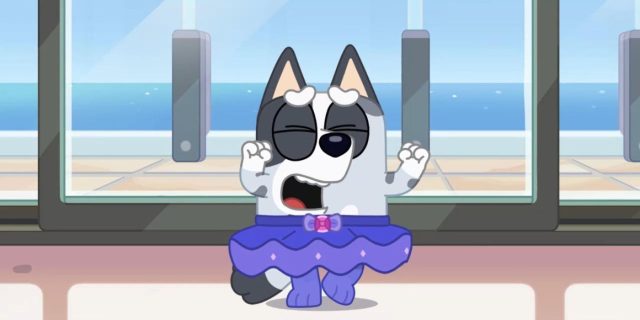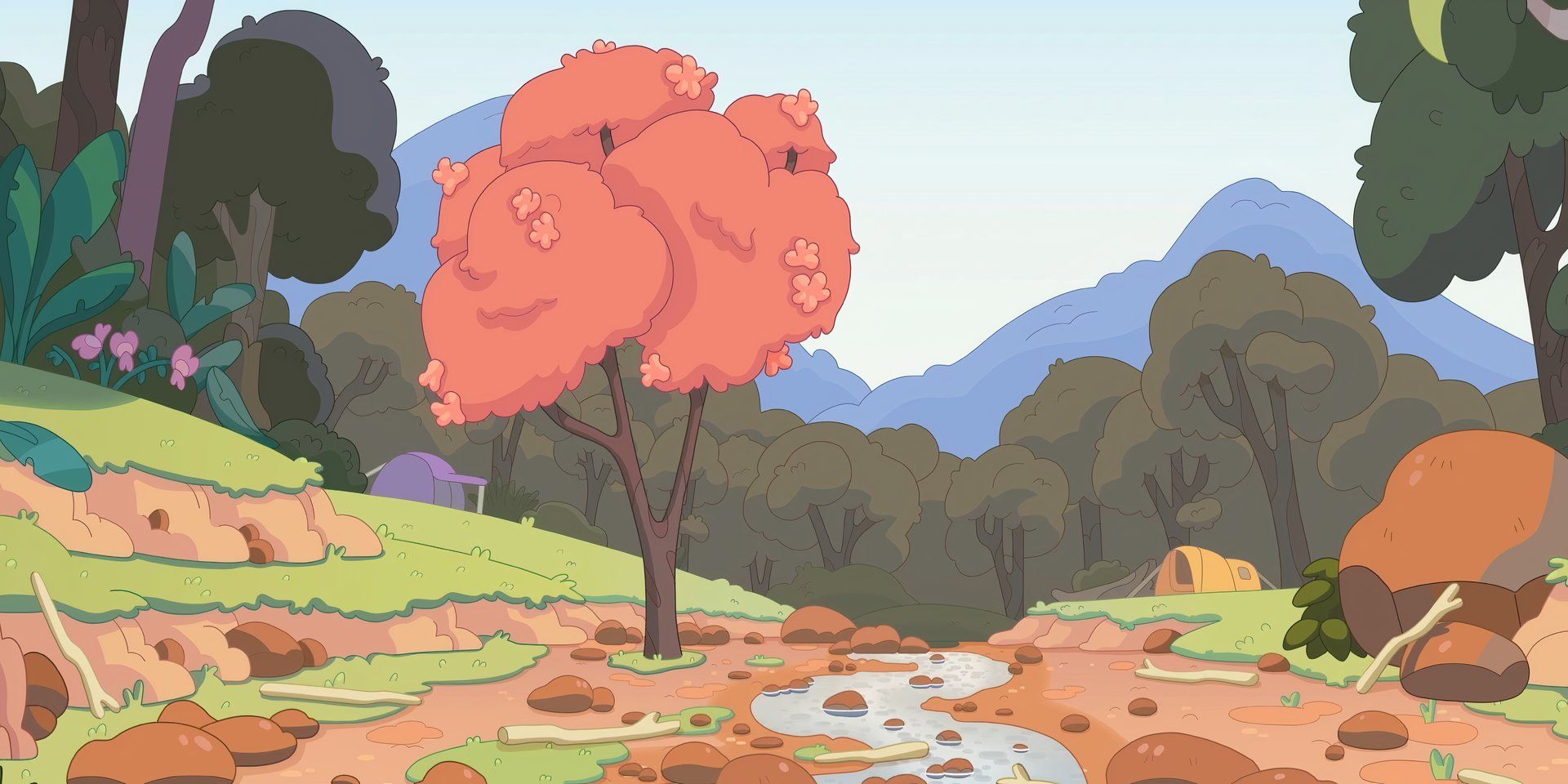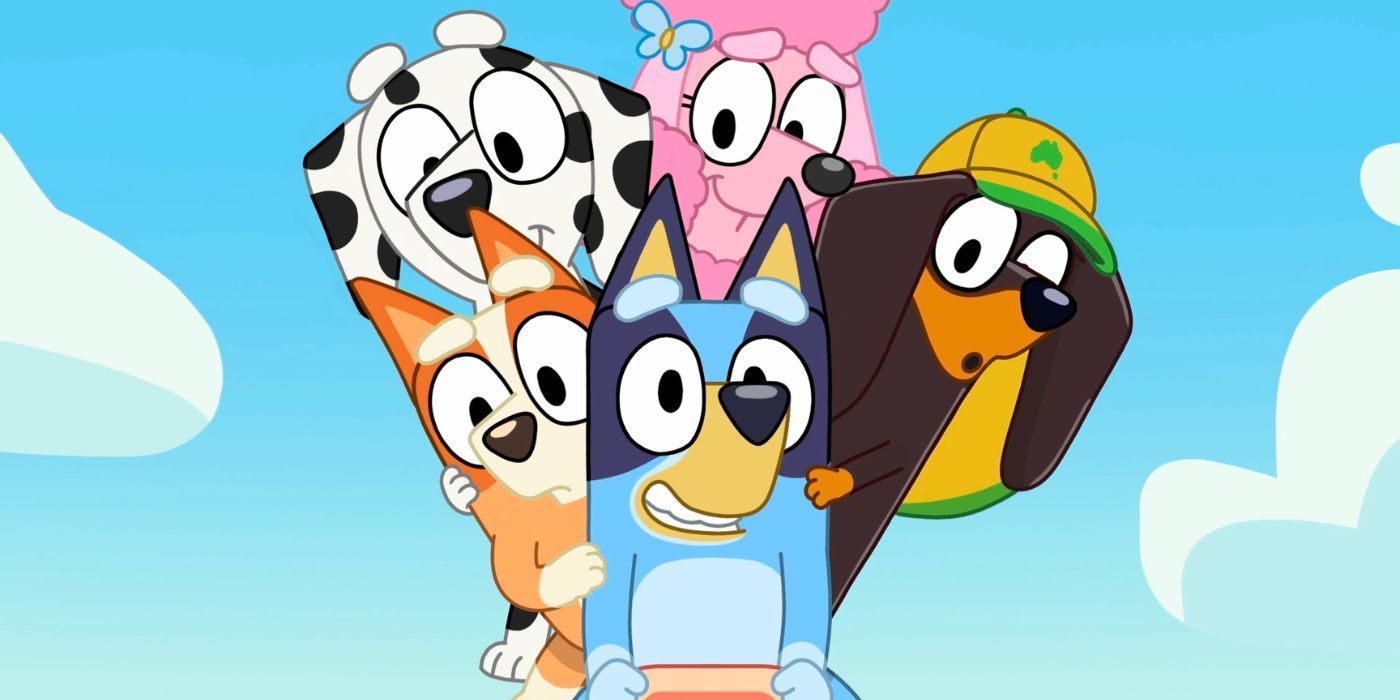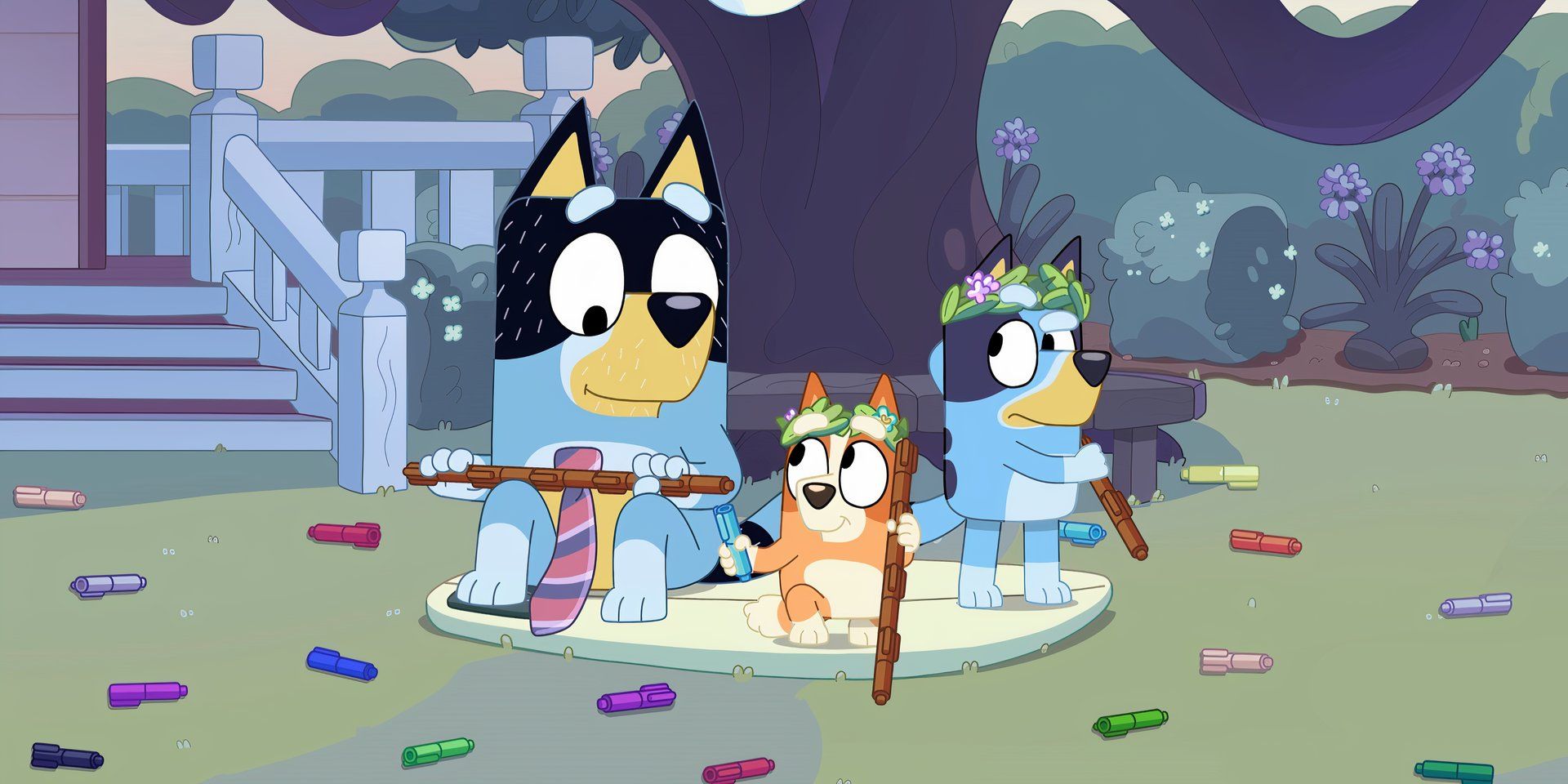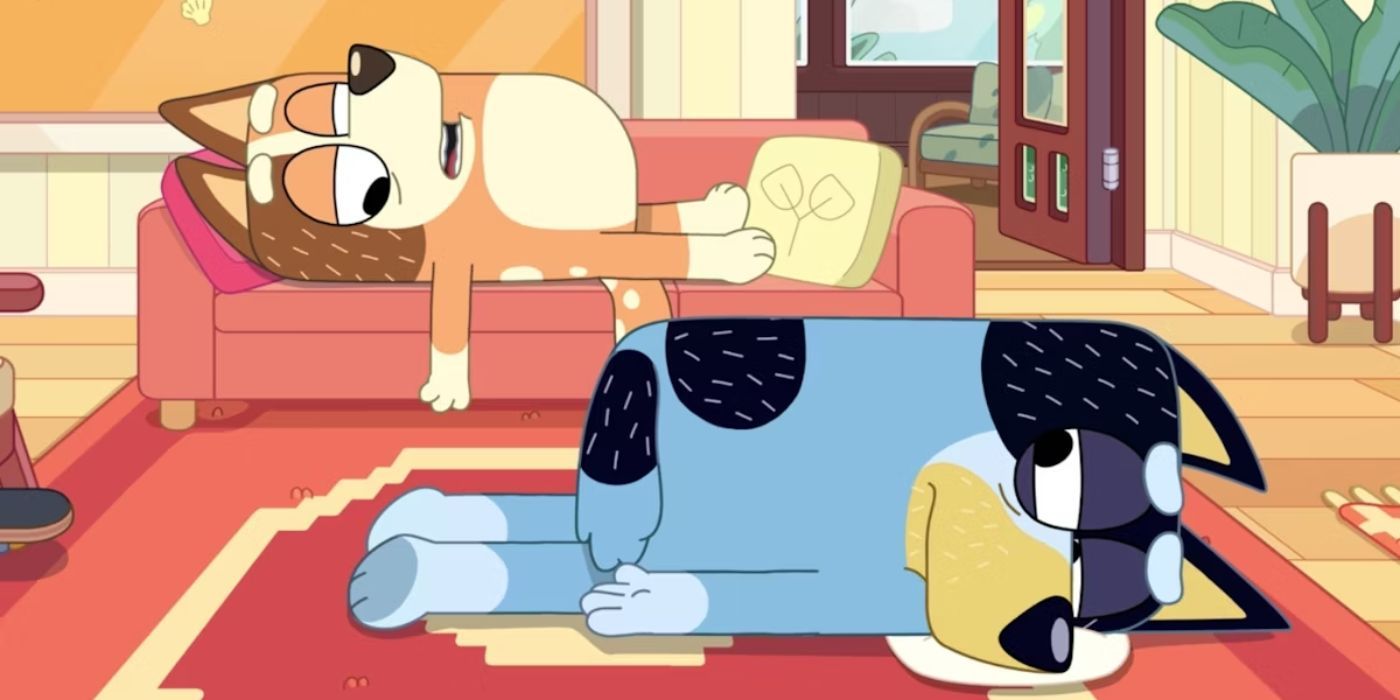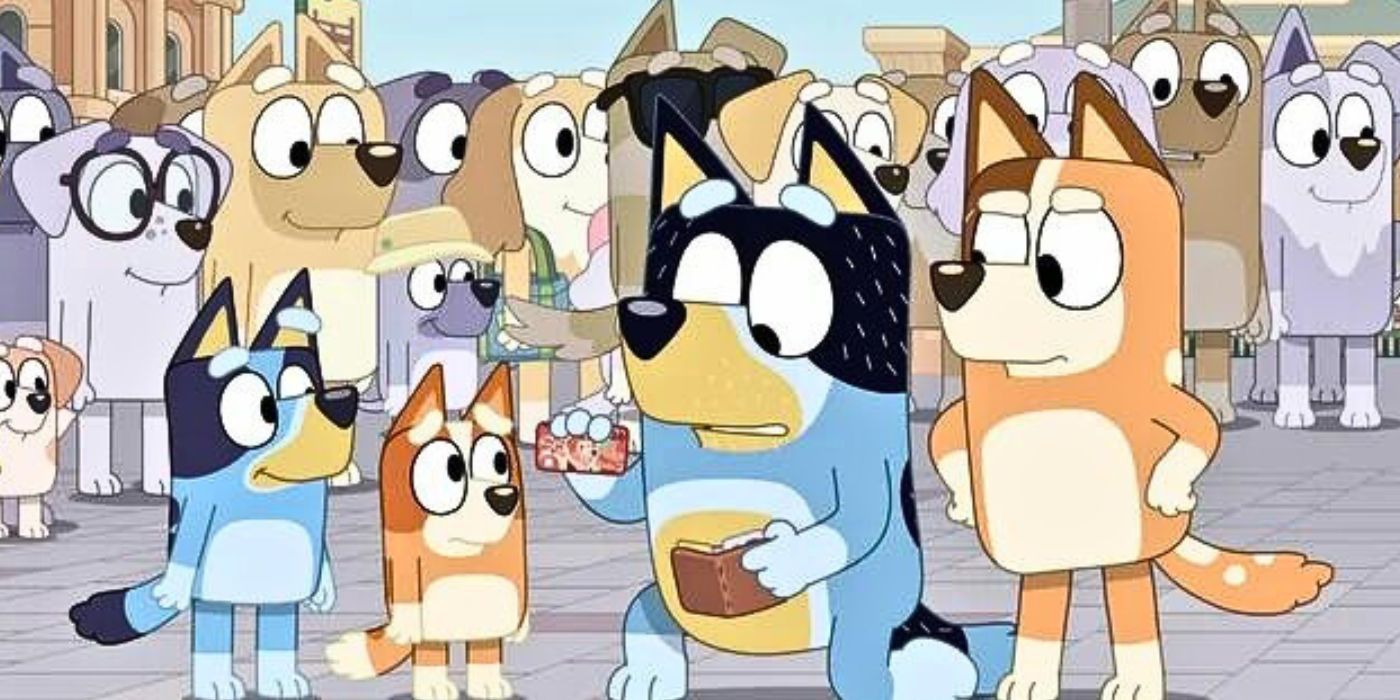The Australian children’s show Bluey has evolved into a worldwide phenomenon in the course of just a couple of years, which makes sense considering that viewers of all ages regard it as the best modern kids’ show in terms of quality. Originally produced by the Queensland, Australia-based Ludo Studios, Bluey became more widely available when it arrived on Disney+, and is typically among the platform’s top streaming shows. The show has received near-universal acclaim as a positive depiction of family values and social themes borne out of the characters adventures, and season 4 of Bluey has already been confirmed.
The show follows six-year-old (and later seven-year-old) anthropomorphic blue heeler dog named Bluey, along with her sister Bingo, their parents Chilli and Bandit, and their circle of friends and extended family. Each seven-minute episode of Bluey features a contained story, often centering around a specific game played by the Heeler family. Due to its accessible, positive messaging and well-written, emotionally-evoking episodes, Bluey has received accolades across the world, and separates itself from other modern kids’ shows with many unique elements.
10 Bluey Has Incredible Music
Each episode has the perfect score
Each episode of Bluey has its own distinct soundtrack, and captures the energy of each episode’s adventure. Composer Joff Bush scores each episode individually, and often borrows from classical music in addition to creating his own music. On occasion, original songs by Australian songwriter and musician Megan Washington, who also voices Bluey’s beloved teacher, Calypso.
The music has become an integral part of the show, and is so popular that Bush has already produced two albums with songs from the show and original remixes (with a third on the way). The effort and care that goes into each episode’s score elevates the emotional impact of each episode, whether it’s frantic and high-energy or slow and calming. It’s a unique feature that distinguishes Bluey from all other modern kids’ shows.
9 Bluey’s Kids Are Realistic
The children on Bluey behave like actual children
Another distinct feature of Bluey is its portrayal of the children on the show. While many modern kids’ shows make their characters sort of an “ideal state” child who already knows how to share, be kind, and make good choices, Bluey has several characters (including Bluey herself) who aren’t always well-behaved. The best example is Bluey’s cousin Muffin, who often throws temper tantrums when she doesn’t get her way. One episode features Hercules the St. Bernard, who bullies other kids into following his lead until Bluey pacifies him by inviting him into their game.
Bluey
is the reigning two-time winner of the Televisions Critics’ Association Award for Outstanding Achievement in Children’s Programming.
The depiction of children as unique in personality gives the show an extra element of integrity. Both kids and parents have an easier time identifying with the show because it accurately reflects the world around them. Real kids are not always perfect and well-behaved, a fact known to every parent and one that is quickly realized by any child as soon as they go to daycare or preschool.
8 Bluey Provides Open Play Ideas
Bluey and Bingo’s games can be played in the real world
Each of Bluey‘s seven-minute episodes covers a single story or adventure, although there is overall plot development and time progression from episode to episode and season to season. Many of the episodes feature Bluey, Bingo and/or their friends and parents playing a specific game, and they are almost always based on imaginative play. Series creator Joe Brumm shows open-ended and child-driven play very intentionally, often involving role-playing and exploration as opposed to more structured objectives or adult-guided games.
The positive effects are two-fold. First, the depiction of open-ended play as a fun and superior alternative to screens or structured games nurtures that concept with real children, and encourages them to engage with their own imagination during playtime. Second, the show provides many easy-to-execute ideas for games that real children can play. Most of the games require nothing but some basic toys, some space, and imagination, making them far easier to translate to the real world than other modern kids’ shows, which are often fantasy-based and require special conditions.
7 Bluey’s Animation Is Beautiful
The animation style is simplistic yet colorful
Bluey‘s simple animation style is another element that makes it superior to its contemporaries. The show is never dull, from the contrast of colors between characters to the beautiful backgrounds and depictions of nature. Bluey often intersperses moments of special animation as well, such as zoomed-in shots of small objects, slow motion sequences, and rapid time-lapses. The show is never noisy in its color and motion, making it easy on the eyes and appealing to viewers of all ages.
6 Bluey Celebrates Differences
Bluey points out differences, and embraces them
One of the best aspects of Bluey is its diverse array of supporting characters. For the most part, each child and their family are based on a different breed of real dog, and their behavior is often shaped by their breed. For example, Bluey’s friend Snickers is a dachshund, and given his long body and short limbs, he often struggles with basic functions like sitting, which is accurate to how a real dachschund moves.
Bluey
almost focused on a completely different character
: Rusty. Series creator Joe Brumm revealed that the early stages of the show centered around Rusty, as Brumm’s favorite childhood dog was in fact a red kelpie named Rusty. There are hints that this was the case, like Rusty sharing the exact same character design as Bluey, but with different coloration.
The key is that Bluey points out all these differences, and never attempts to equalize its characters. Instead, it celebrates what makes each character different, often involving them in situations where their differences are viewed as a positive. Snickers may not be able to sit or run fast, but he can roll down a hill fast and hide behind skinny trees. Bluey’s friend Pom-Pom (a Pomeranian), can’t reach high places because of her small size, but she is tough and resilient. This is a realistic interpretation of how different people are in the real world, and encourages true body positivity.
5 Bluey Doesn’t Talk Down To Kids
Bluey appreciates how emotionally intelligent kids are
Perhaps the single most important distinguishing element of Bluey is how its characters speak to one another, and specifically how children are spoken to. At no point in the show are kids spoken down or pandered to like they are in many modern kids’ shows. Bluey appreciates that kids are capable of understanding more than most adults give them credit for, and has them speak with a level of emotional intelligence and maturity that is rare in modern kids TV.
That factor is also a big part of what makes Bluey more palatable for adults. While Bluey is defined as a preschool-level show, the fact that the dialogue between all the characters is intelligent, witty, and downright funny makes it so that adults are able to connect with the characters and plots. The sing-songy, simplistic dialogue of other modern kids’ shows can be unbearable and mind-numbing for many adults, but Bluey never ventures into those waters.
4 Bluey Subtly Provides Life Lessons
Bluey provides kids and parents with valuable takeaways
While many modern kids’ shows attempt to provide lessons, Bluey does a better job than most when it comes to presenting them in a way that makes them accessible to young and old viewers alike. They are far more specific and deep than the lessons depicted in many modern kids’ shows, and almost always dig into the reasoning behind them. For example, in the episode “Tina”, Bluey and Bingo are taught that they should listen to their parents.
However, the way they learn is by NOT listening to their parents and suffering the consequences. They learn the “why” behind listening to their parents: because their parents want the best for them. The show also offers lessons specifically for adults, another feather in its cap when it comes to universal appeal. The logic and specificity behind Bluey‘s life lessons, combined with the entertaining and non-pandering delivery of the lessons, separate Bluey from the rest of the pack.
3 Bluey Addresses Difficult Topics
Bluey has some heavy, yet important episodes
Bluey also separates itself from other modern kids’ shows by discussing some more difficult topics. As a by-product of not talking down to its audience, the show is able to handle some heavier issues that kids in the real world face. The best example is the episode “Copycat”, in which Bluey and her father find an injured bird on a morning walk. They take it to the vet, but the bird dies, and Bluey is given the news personally and without any sugar-coating or metaphorical disguise.
The rest of the episode covers how Bluey processes the information, and she even attempts to recreate the incident in order to better understand the why of it all. Other episodes deal with teasing and how to deal with it, how their aunt is unable to have children, and coping with the reality of moving, to name a few examples. Bluey actively provides a blueprint for how children can deal with some of life’s more difficult experiences, along with a blueprint for parents on how to approach them with their kids.
2 Bluey Depicts Realistic Parenting
Sometimes parents struggle, and Bluey doesn’t shy away from that
Perhaps the most-cited reason for adults’ love of Bluey is its realistic depiction of parenting. While Bandit may make other dads feel inadequate due to how invested he is in his children’s games, Bandit and Chilli often fall short of being the perfect parents. In the episode “Whale Watching”, for example, Bandit and Chilli don’t want to participate in their children’s play because they are hung-over after a late night of New Year’s Eve partying. In “Dance Mode”, Bandit bribes Bingo with money to pacify her being upset, a move that Chilli bluntly observes “is not good parenting.”
Bandit’s brother Stripe and his wife Trixie are even depicted occasionally as inferior parents because they spoil their daughter Muffin and cave to her temper tantrums. While they almost always redeem themselves, it’s a big deal in modern kids’ TV to not portray all parents as perfect for one simple reason: no parent is actually perfect. Parents can identify with Bluey because it states clearly that parenting is difficult, and just because you occasionally fall short of perfection, you can still be a great parent as long as you’re supportive and ensure your children know you love them.
1 Bluey Has Adult-Friendly Humor
Every episode appeals to adults just as much as kids
If the parenting portrayal is the best reason that adults identify with the show, the adult-friendly humor is the icing on the cake. Bluey is positively loaded with adult-friendly humor, small sight gags, and one-liners that will certainly fly over the heads of little ones but will make adults laugh out loud. For example:
Bluey: “I thought you said you knew everything…”
Bandit: “I do. Ask me a question.”
Bluey: “Okay. Where was I before I was born?”
Bandit: “Yeesh. Ask me another one.”
The adult humor is not necessarily inappropriate, it simply speaks directly to the adult experience, a la observational comedy. Keeping a close eye on the background of Bluey will often reveal pop culture references small gags that adults will appreciate, such as Bluey’s friend Winton’s recently-divorced dad buying protein powder at the pharmacy to bulk up and impress the Terriers’ single mom in the episode “TV Shop”.
Bluey is that much more watchable for adults thanks to the specific humor, and that’s really the defining feature of Bluey. The aforementioned elements make it superior to all other modern kids’ shows, but any one of those factors is not what makes it the best modern kids’ TV show. Collectively, these elements all make Bluey entertaining and emotionally impactful for a near-universal audience, regardless of age.

